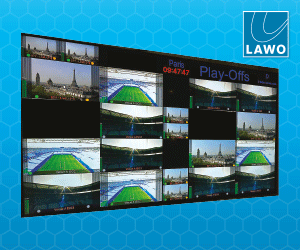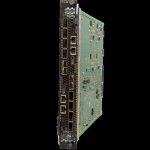Grass Valley has added a high-quality, fully integrated multiviewer monitoring capability to its family of Trinix NXT multi-format digital video routing switchers. The new option supports infrastructures up to 3 Gb/s while providing up to eight SDI multiviewer monitor outputs per cardincluding the ability to monitor audio for each source. The Trinix multiviewer is ideally […]
Grass Valley has added a high-quality, fully integrated multiviewer monitoring capability to its family of Trinix NXT multi-format digital video routing switchers. The new option supports infrastructures up to 3 Gb/s while providing up to eight SDI multiviewer monitor outputs per cardincluding the ability to monitor audio for each source. The Trinix multiviewer is ideally suited to monitoring within all types of broadcast control rooms, live production and distribution facilities, and mobile trucks.
The new Trinix NXT Multiviewer is easily installed into a new Trinix router or field-integrated into existing Grass Valley Trinix frames.
All existing Trinix frames (including every Trinix sold since the products introduction in 2001) can be upgraded quickly and easily to support the new Trinix Multiviewer solution. Since the Trinix Multiviewer is fully integrated within the router, it eliminates the need for additional cabling and other hardwarewhich leads to a more reliable multiviewer.
The Trinix Multiviewer optimises space by eliminating secondary, external components and connections that consume valuable rack space, said Martin Fry, Senior Vice President of Routing and Signal Management Solutions for Grass Valley.
Best of all, the Trinix Multiviewer can be retrofitted to any Trinix frame weve ever shipped, preserving our customers investment. No other manufacturer can make this claim or supports customers like we do with Trinix.
With less than 75 watts typical power consumption for eight outputs, the Trinix NXT Multiviewer features two MADI inputs for discrete AES audio monitoring in addition to embedded audio monitoring capabilities from any source routed to the multiviewer; sophisticated graphics, tally (TSL and Image Video), and UMD support; powerful signal monitoring, status, and alarming functions; and support for Grass Valley control systems.
Each multiviewer board includes 32 scalars with all inputs and outputs on each board supporting all video standards (from 480i to 1080p). By using the cards cascade capability, the system can also support more than 128 images on a single output without rescaling the cascaded signals. Users can also set up a single image to span multiple monitors, creating stunning video cubes.















































































